Top Roofing Materials for Flat Roof
Choosing the best material for a flat roof is a very important choice. When starting a new building project or replacing an old roof, the material selection has a big influence on how long the structure lasts and how functional it is.
With a multitude of options available, each presenting its unique set of advantages and drawbacks, it might be daunting to go through this selection procedure. Factors such as installation costs, long-term maintenance requirements, and the material’s ability to withstand local weather conditions must all be carefully considered.
Additionally, it’s crucial to note that even though the term “flat roof” is commonly used, these roofs typically require a slight slope to facilitate proper drainage of rainwater. Consequently, the design must account for this slope, as well as the installation of appropriate drainage systems such as gutters.
Whether it’s repairing a leaky garage roof or safeguarding a newly constructed shed, finding the right roofing material is a significant job. The ideal choice not only ensures effective waterproofing but also contributes to the aesthetic appeal of the structure, all while remaining cost-effective.
In this guide, we will look at some of the best roofing materials designed for flat roofs, putting light on their benefits and assisting you in making an informed selection for your unique project.
What is Flat Roofing?
Flat roofing refers to roofing systems that have a minimal slope, usually less than 10 degrees, resulting in a nearly horizontal surface. Although they are called “flat” roofs, they typically have a slight slope to allow for proper water drainage. These roofs are commonly found in commercial, industrial, and residential settings and offer advantages such as additional usable rooftop space. However, proper installation and maintenance are essential to avoid issues like water pooling and structural damage.
There are several popular materials used for flat roofs, including EPDM rubber, TPO, PVC, built-up roofing (BUR), and modified bitumen. Each material has unique strengths, such as durability, weather resistance, and ease of installation. The selection of materials is based on factors like climate, budget, and intended use, with careful consideration given to their characteristics and performance over time.
Different Types of Material for a Flat Roof
The quality of the roofing material is essential to both the durability and aesthetics of your roof. Here are some popular and high-quality roofing materials for flat roofing projects.
1. EPDM Membrane Roofing
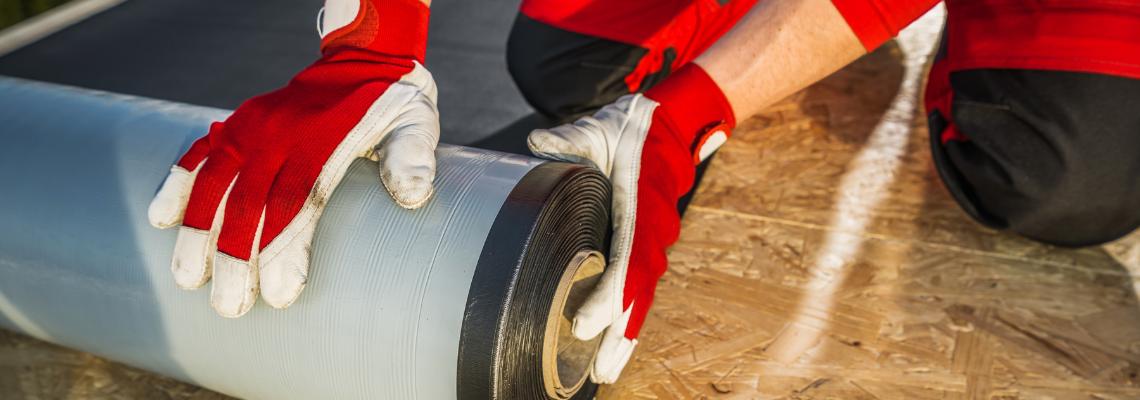
EPDM is a type of flat roofing material that is made from synthetic rubber. This is a popular choice for flat roofing because of its durability and flexibility, making it resistant to UV rays, ozone, and extreme temperatures. One of the main advantages of EPDM is its impressive lifespan.
EPDM roofing systems have become increasingly popular due to their durability and resistance to weathering, including UV radiation. When installed correctly and maintained routinely, an EPDM roof can endure for up to 30 years, offering a significant return on investment. Even in severe weather conditions, EPDM roofs are recognized for their resilience, requiring minimal upkeep.
If you have a non-living space, such as a flat roof over a garage, an EPDM roof is an excellent option. The black color won’t get as dirty as a white membrane, and the material is incredibly durable, almost like a bulletproof rubber roof system.
2. TPO Membrane Roofing
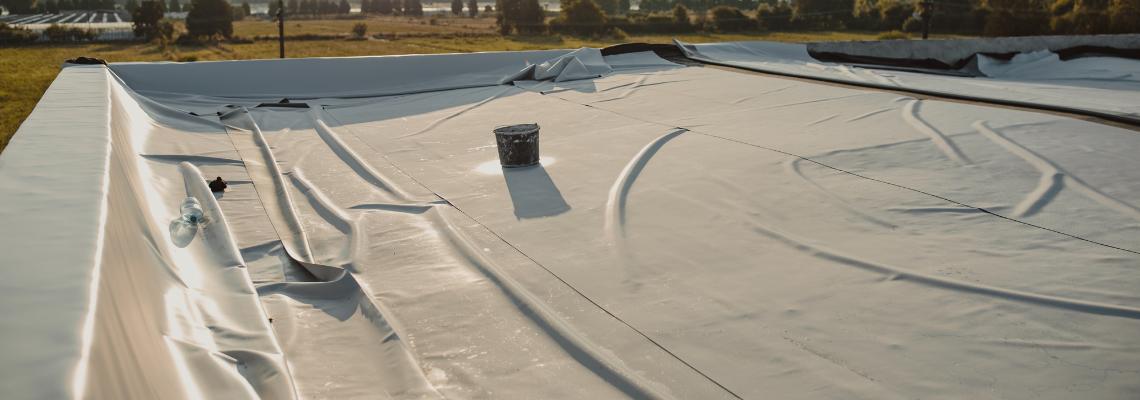
TPO (Thermoplastic polyolefin) is a type of flat roofing material made from thermoplastic polyolefin, designed for use on flat or low-slope roofs. Due to its energy-efficient features and ability to reflect heat rather than absorb it, TPO membrane roofing material is becoming increasingly popular.
If you have a flat roof or a low-slope dormer above a bedroom, TPO is an excellent option. It keeps the room cooler and can also be installed over a non-living space like EPDM. TPO is a cost-effective flat roofing material and its lightweight nature makes it easier to install than some of its counterparts.
However, TPO material tends to show dirt rather quickly, so it may not be suitable for areas subject to frequent dirt accumulation. Moreover, due to its recent introduction, it can be challenging to find experienced professionals capable of repairing it correctly. Therefore, it is recommended to avoid working on TPO roofs without experienced professionals.
3. PVC Membrane Roofing
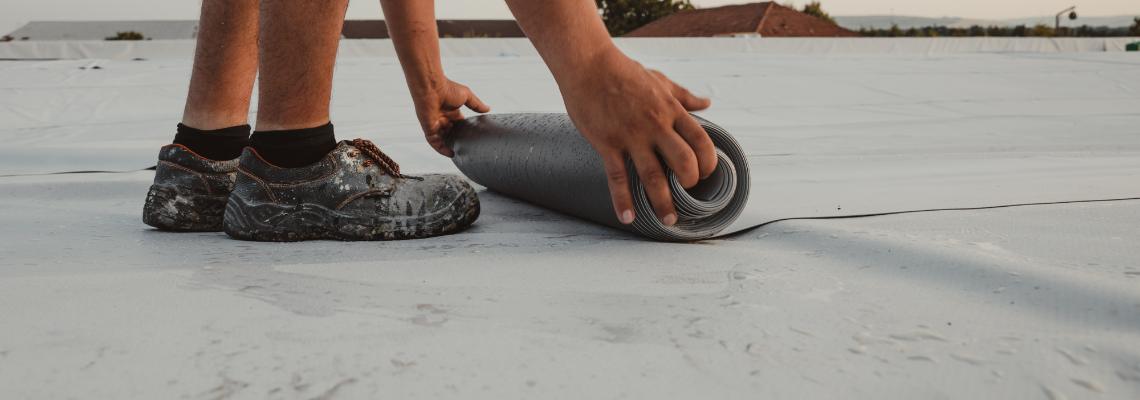
Polyvinyl Chloride (PVC) membranes are a popular option for flat roofing. They are ideal for buildings that require cooler temperatures and glare-free roofing. PVC and TPO have similar characteristics, and the installation process is almost identical.
PVC roofs are weather-resistant, featuring an acrylic finish, durable weathering film, flexible fiberglass mat, and high-quality bottom ply. They are also versatile and affordable, with various color options available. PVC flat roofs can last up to 25 years with proper installation.
However, it’s important to consider the drawbacks of PVC roofs. During the manufacturing process, toxic chemicals like dioxin are released, which have been linked to several health risks. Furthermore, when PVC roofs are severely damaged, it takes more effort to repair or fix them.
4. Standing Seam Metal Roof
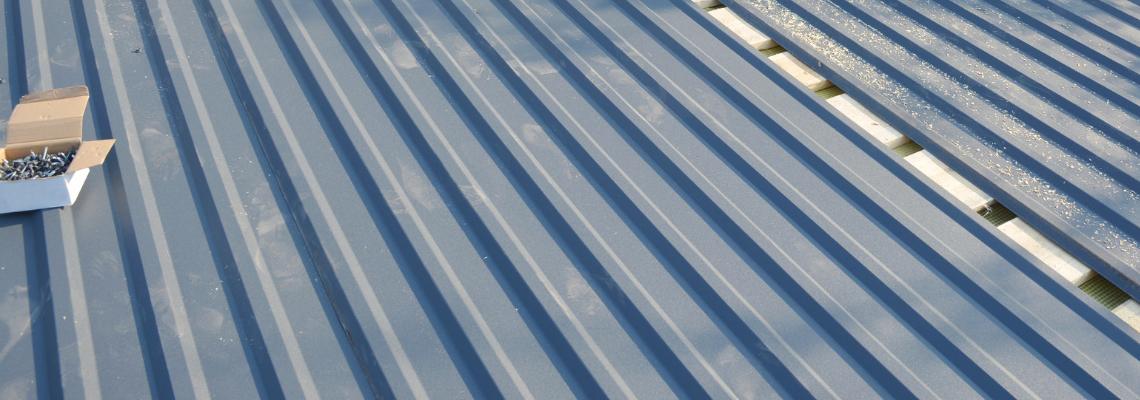
Standing seam metal roofs are an excellent choice for flat roofing projects if you’re looking for durability and eco-friendliness. They can last up to 30-50 years, making them a cost-effective option in the long run. The panels lock together at the seams, allowing for expansion and contraction as the metal heats and cools. This ensures that the roof remains intact for an extended period.
While metal roofs might come with a higher price tag compared to other roofing options, they offer an eco-friendly advantage that sets them apart. Being 100% recyclable, they contribute significantly to environmental sustainability. Despite this environmentally friendly aspect, it’s important to note that metal roofs may not appeal to everyone due to their distinct appearance characterized by slatted panels.
To extend the lifespan of a standing seam metal flat roof, it’s crucial to ensure proper installation and adequate ventilation in the attic. This attention to detail is vital for optimizing the roof’s longevity. Under ideal circumstances, with these factors in place, a standing seam metal flat roof has the potential to endure for up to 50 years with minimal upkeep requirements.
5. BUR (built-up roof)
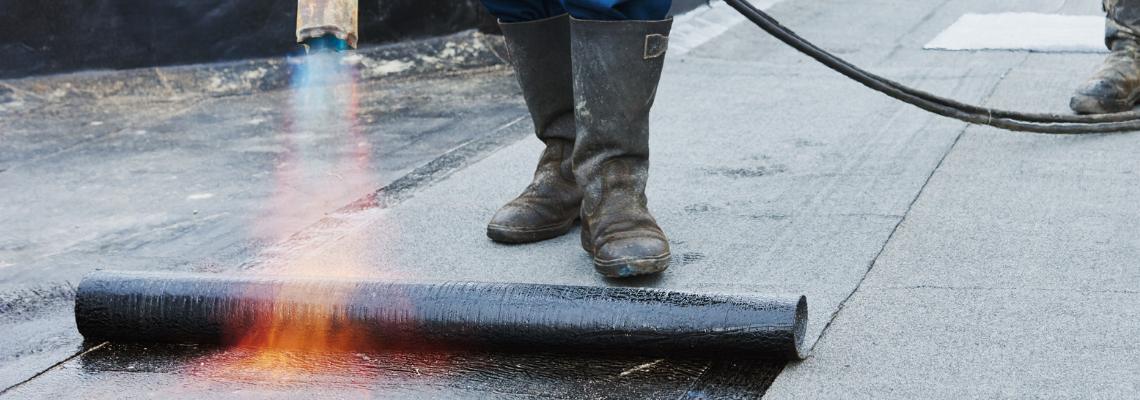
Built-up roofs (BUR), also known as multiple-ply roofs, consist of layers upon layers of various materials bonded together using asphalt or tar. This construction method is commonly employed for flat roof replacements due to its effectiveness. Interestingly, each additional layer added to a BUR extends the roof’s lifespan by approximately five years. This means that just incorporating five layers of material can provide you with a solid 25 years of dependable roof performance.
One of the standout features of BUR roofs is their exceptional durability against storm damage. They stand strong against the forces of nature, including wind, rain, hail, and other flying debris. Moreover, they offer a safer surface for work compared to some other roofing options.
The multiple layers of felt or fiberglass in BUR roofs contribute to their added strength and protection. Additionally, the application of tar or asphalt serves to create a waterproof barrier, ensuring that your building remains dry and secure. Notably, BUR roofing is relatively straightforward to install and represents a cost-effective solution for flat roofs. Furthermore, it’s relatively easy to repair and maintain, further enhancing its appeal. With proper care, a BUR roof can endure for up to 20-30 years, making it a reliable and long-lasting choice for flat roof applications.
6. Modified Bitumen
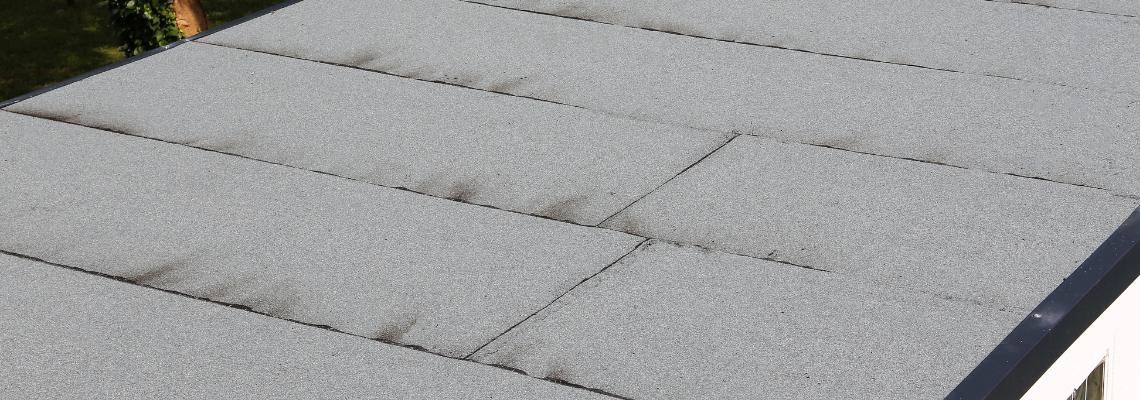
Modified Bitumen roofs are a type of flat roofing material that is primarily made of asphalt. They are similar in construction to three-tab asphalt shingles, but are more flexible and have an additional waterproof coating applied. This roofing option is a great choice for smaller flat roof replacements, as it is available in many different colors and is easy to install.
Although modified bitumen roofing is highly effective for waterproofing purposes, it falls short when it comes to withstanding other external factors such as hail, fallen branches, or severe weather patterns. This increased vulnerability means that modified bitumen roofs tend to have a shorter lifespan, typically lasting between 10 and 15 years.
When it comes to installing modified bitumen roofs, various techniques can be employed based on the unique demands of the project and the materials selected. These techniques encompass a range of methods, including hot-applied, torch-applied, cold-applied, and self-adhered approaches. Each technique offers its own set of advantages and considerations, allowing for flexibility in application depending on the specific requirements and preferences of the roofing project.
So, Which Material is Best for Flat Roofing?
When it comes to replacing a flat roof, it’s essential to consider several key factors before selecting the best material. These factors include the cost, project type (commercial or residential), climate conditions, and the intended use of the space beneath the roof. For instance, if you plan to use the space below the roof for living areas like bedrooms or living rooms, materials like PVC or TPO may work better due to their suitability in such environments.
For those who prioritize durability and are willing to invest, a standing seam metal roof offers excellent longevity and reliability. On the other hand, if you want an affordable option that provides upfront savings and quicker installation compared to traditional built-up roofs, modified bitumen presents a viable choice. However, its lifespan typically ranges from 15 to 20 years, so it’s essential to weigh the trade-offs between initial cost and long-term durability.
EPDM, or synthetic rubber, is another compelling option known for its impressive longevity, with a lifespan of up to 30 to 50 years. Despite being commonly available in black, EPDM offers versatility and durability, making it suitable for various residential and commercial roofing properties. Each flat roofing material has its own set of advantages and considerations. It’s crucial to choose a material that not only fits your budget but also aligns with your desired aesthetics and long-term goals.
Click here for the ultimate roofing material selection guide
Why Are Flat Roofing Materials Different?
Flat roof roofing materials differ from those used on pitched roofs mainly because flat surfaces pose unique challenges. Unlike pitched roofs, which naturally guide water away, flat roofs tend to trap water, increasing the risk of water infiltration and damage. Without proper drainage systems like internal drains or gutters, water can accumulate on flat roofs, leading to pooling and ponding, especially during heavy rainfall or snowmelt. This standing water can put excessive stress on the roof structure, potentially resulting in roof leaks, structural degradation, and premature wear of roofing material.
Moreover, the materials chosen for flat roofing must withstand constant exposure to various elements, including UV radiation, temperature fluctuations, and moisture. Traditional roofing materials like asphalt shingles, commonly used on pitched roofs, are not the best material for a flat roof because they can degrade when exposed to standing water and harsh weather conditions. To address these challenges, modern flat roofing materials have evolved with advanced designs and technologies. They are engineered with enhanced waterproofing properties and improved resistance to weathering, ensuring greater durability and longevity.
Conclusion:
When it comes to selecting the best material for a flat roof, it’s essential to consider factors such as durability, cost-effectiveness, and suitability for the intended space. Options like EPDM, TPO, PVC, standing seam metal, modified bitumen, and built-up roofs each offer unique benefits and considerations. To ensure you make the right choice for your property, it’s advisable to consult with experienced professionals who can provide tailored recommendations based on your specific needs and preferences.
At NexLevel Roofing and Outdoor Living, we specialize in both commercial and residential roofing services, offering expertise and quality craftsmanship to protect and enhance your home. Whether you’re in need of a flat roof replacement or repair, our team is dedicated to delivering superior results. Contact us today at 972-346-6432 or email us at info@nex-level.net to schedule a consultation and experience the difference our services can make in safeguarding your property for years to come.
Ready to Elevate Your Space? Let's Talk!
Experience unmatched quality and craftsmanship in the heart of Texas. At NexLevel, we specialize in transforming homes with precision roofing and bespoke outdoor living spaces. Our dedicated team combines years of expertise with top-tier materials to deliver results that not only meet but exceed expectations. Whether you’re envisioning a cozy fire pit for chilly evenings or a resilient roof to protect your home, NexLevel is your trusted partner. Dive into a world of possibilities and let us bring your vision to life.

